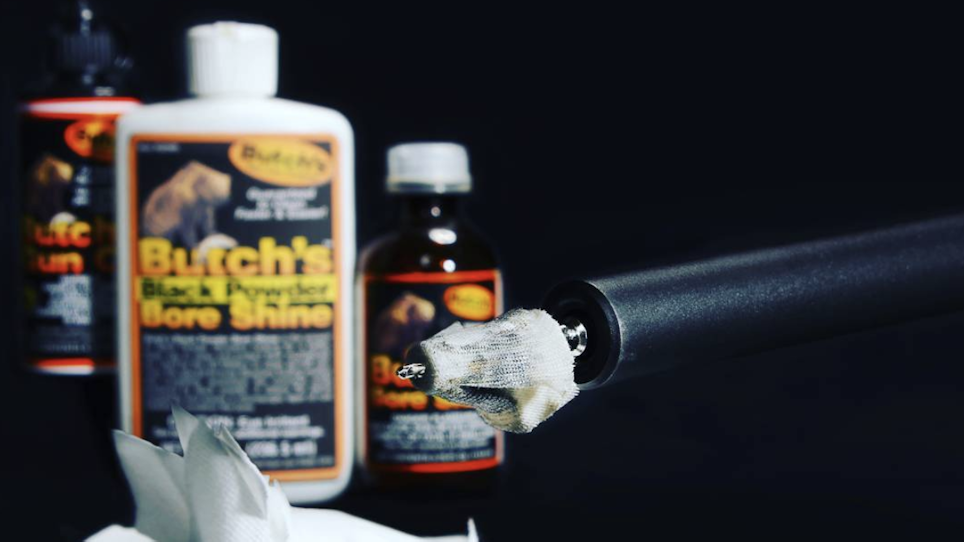One of the first things my old shooting mentors taught me way back when was the importance of meticulously maintaining my rifle. It’s important regardless of your rifle’s age, cost or action type. Since bolt-action rifles are the most common in the field today, here’s how to properly clean yours.
First, you need the right stuff. This includes:
Cleaning Rod: I use a four-piece aluminum rod that breaks down for easy transport and storage. You also need proper caliber copper bore brushes for the bore. They’re cheap and need to be replaced once they get worn down.
Cleaning Patches: Cloth patches are inexpensive and can be purchased for the caliber rifle you have.
Solvent: There are lots of different solvents out there. I actually use two — Hoppe’s No. 9 for powder removal, and another (Birchwood Casey Bore Scrubber, Hoppe’s Black, Hoppe’s Bench Rest Copper Solvent, Remington 40-X, Sweet’s Copper Remover Solvent, Bore Tech CU+2 Copper Remover, Shooter’s Choice MC #7, Butch’s Bore Shine, Montana X-Treme Copper Killer; among others) for cleaning barrel fouling.
Rust Protector: Barricade, RemOil, Ballistol Multi-Purpose Oil or another similar product to use as a finishing touch.
Rifle Holder: A gun vise is a common tool for this, but I also have been known to use the sandbags I shoot off of, or my Lead Sled. It just needs to hold the rifle securely and safely while you work it over.
Tools: When cleaning my rifle I always check the tightness of my scope mounts, so the proper Allen wrenches are required for this.
A place to work: My garage workbench is one place, but so is the tailgate of my truck, since I like to clean my rifles at the range before I get home. Remember that many of the chemicals or solvents used when cleaning are toxic to breathe or touch. So make sure you have a well-ventilated area, keep the stuff out of your eyes and wash up thoroughly once done.
OK, let’s get started.
1. Make Sure the Rifle Is UNLOADED!
My wife and I just took the AZ hunter education course, and nothing about firearms handling was emphasized more than the first thing you do when handling a firearm is make sure it’s unloaded. Keep the barrel pointed in a safe direction, open the action and visually inspect it before moving on.
2. Partially Disassembly
Unless you’re completely taking the rifle apart (removing the trigger assembly, etc.), place the rifle in your gun vise, remove the bolt and set it aside. End of season or after being out in a downpour or other extreme wet weather experience, I’ll take the trigger assembly and barrel out as well, but not in season.
3. Check and Wipe
First thing I do is closely inspect the rifle to see if anything is amiss -- loose screws, something broken, whatever. Nothing wrong? I use a clean paper towel and wipe everything down to remove loose dust, grit, etc.
4. Barrel Cleaning
Always clean the barrel from the rear. First, attach a clean patch to the end of the jib on the tip of the cleaning rod, soak it with bore cleaner, push it through the barrel, and remove the patch before withdrawing the cleaning rod. Next, attach your proper caliber copper bore brush to the rod, put a few drops of cleaning solvent on it and run it in and out of the barrel several times. Finally, replace the brush with your job and start running clean patches through the barrel until they come out white. Don’t be surprised if it takes several to get the job done.
Note: During this entire process, take care to keep the solvent off your wood stock, as it can mar the finish.
5. Clean Metal Parts
Soak a clean rag or paper towels with solvent and use them to wipe down the inside of the magazine box, bolt face and bolt, trigger guard -- any and all metal parts. I like to use a toothbrush or similar brush to whisk over these parts, which helps loosen gunk. Then wipe them down to get all the solvent off. After a heavy shooting session, I might spray some solvent down into the firing pin and use a can of compressed air to help blow it out.
Note: you’d be amazed at the many uses of compressed air when cleaning firearms.
6. Stock
Wood or synthetic, your stock won’t need much attention except to make sure all solvents and oils are wiped off. I always check to see that my sling swivel studs aren’t loose.
7. Rust Prevention/Lubrication
All metal parts should be wiped down with a rust protector/lubricant. Don’t spray the oil directly onto the metal, but instead spray it onto a paper towel and then wipe the parts down. This helps prevent the lubricant from getting into places it doesn’t need to go.
8. Reassemble
Put your rifle back together, cycle it and dry-fire it a time or two to make sure all is well, then head for the gun safe. But first, make sure you clean up after yourself. I have a medium-sized fishing tackle box where I store enough cleaning stuff for a day at the range, which makes it easy to just grab the box when I head out knowing I’m not forgetting anything.






